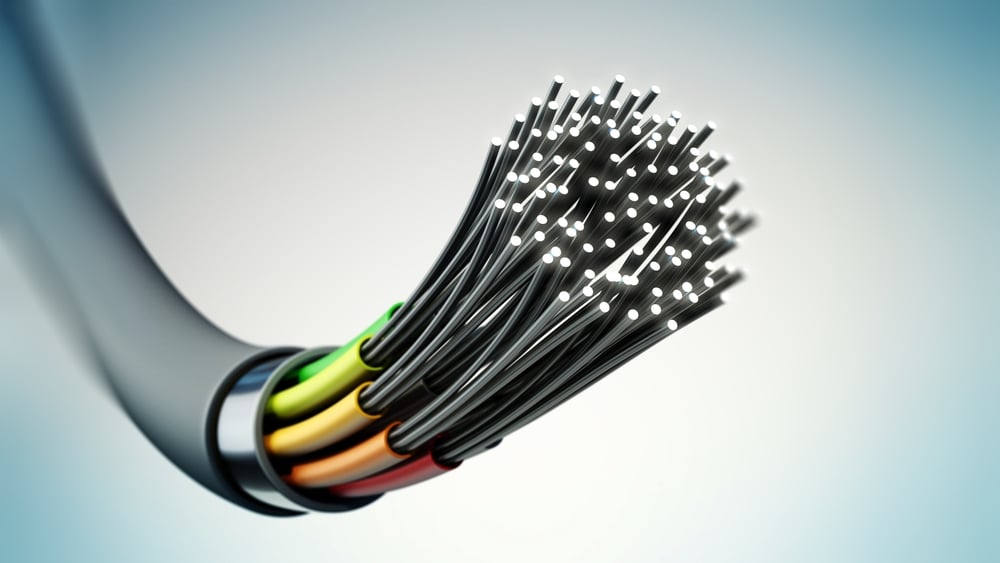How Dental Computer Cabling Impacts Speed and Workflow
In modern dental practice, where digital technology plays a central role in patient care and administrative efficiency, having a robust and reliable IT infrastructure is crucial. A commonly overlooked yet fundamental component of this infrastructure is dental computer cabling. Proper cabling doesn’t just keep your practice connected; it directly impacts the speed, reliability, and workflow of your operations.
Let’s explore how dental computer cabling affects practice performance, the technical advantages it offers, and why partnering with a professional dental IT network support provider ensures your systems are optimized for success.
The Role of Dental Computer Cabling in Practice Performance
At its core, cabling serves as the backbone of a dental IT network. It connects your devices—computers, digital X-ray systems, intraoral scanners, and more—to ensure seamless communication between them. When done right, cabling significantly enhances:
Network Speed
The speed at which your devices communicate depends heavily on the quality and design of the cabling. Properly installed and high-quality Ethernet cables, such as Cat6 or Cat6a, can handle gigabit speeds, enabling quick data transfers and reducing lag. In a dental practice, this translates to faster retrieval of patient records, real-time imaging, and seamless integration with cloud-based dental IT services.
Reliability
Poor cabling can lead to dropped connections, data loss, and network disruptions. These issues can interrupt patient care and administrative workflows, causing delays and frustration. Properly installed and maintained cabling ensures a stable connection, reducing downtime and enhancing the overall reliability of your network.
Scalability
As your dental practice grows, so does your need for additional devices and bandwidth. Proper cabling systems, like structured cabling, allow for easy expansion without needing a complete overhaul. This future-proofing ensures your network can adapt to new technologies and increasing demands without compromising performance.
Technical Benefits of Proper Cabling
Investing in high-quality dental computer cabling offers numerous technical advantages that directly contribute to improved practice performance.
Reduced Latency
Latency is the delay in transmitting data between devices. In a dental office, high latency can cause delays in accessing digital X-rays, syncing patient data with cloud software, or running dental practice management software. Proper cabling minimizes these delays, ensuring real-time performance of essential tools.
Enhanced Signal Quality
Inferior cabling or poorly installed systems can result in signal degradation, leading to slower data transfer rates and network errors. High-quality cabling with proper shielding and installation reduces interference, maintaining optimal signal quality.
Minimized Interference
In dental offices, various electronic devices operate simultaneously, potentially causing electromagnetic interference (EMI). Shielded twisted-pair cables, properly routed and installed, minimize EMI, ensuring your IT network operates smoothly even in high-activity environments.
Improved Security
A robust network begins with secure cabling. Unlike wireless networks, wired connections are inherently more secure, protecting sensitive patient information and meeting regulation requirements. Professional dental IT services can further enhance security by ensuring cabling aligns with best practices and compliance standards.
The Workflow Advantage: Optimizing Daily Operations
Proper dental computer cabling not only boosts technical performance but also enhances day-to-day workflow in the following ways:
Faster Patient Turnaround
Speed is critical in a busy dental practice. Efficient cabling ensures that tasks like accessing patient records, viewing digital images, and processing insurance claims happen without delays. Faster processing leads to shorter appointment times and more satisfied patients.
Seamless Device Integration
Modern dental practices rely on various devices and systems, from imaging tools to patient management software. Proper cabling ensures seamless integration of these devices, allowing for smoother daily operations and workflows and reducing the risk of compatibility issues.
Reduced Downtime
Network downtime can be costly, both in terms of lost revenue and patient trust. Reliable cabling minimizes the risk of unexpected outages, ensuring that your practice stays operational and productive.
Easier Troubleshooting
When cabling is organized and labeled properly, diagnosing and resolving network issues becomes much faster. This saves valuable time during emergencies and ensures your practice gets back on track quickly.
The Importance of Dental IT Network Support
While proper cabling is essential, it’s only one part of a well-functioning IT network. Professional dental IT services provide the expertise needed to design, install, and maintain a delicate cabling system that aligns with your practice’s needs.
Benefits of Partnering with Dental IT Professionals:
- Tailored Solutions: Dental IT experts understand the unique requirements of dental practices, from integrating imaging systems to ensuring compliance with HIPAA and other regulations.
- Scalable Systems: They can design cabling infrastructure that accommodates growth and future technology upgrades.
- Proactive Maintenance: Regular monitoring and maintenance prevent small issues from becoming major disruptions.
- Enhanced Security: Dental IT professionals implement secure systems to protect sensitive patient information.
Signs It’s Time to Upgrade Your Cabling
If your practice experiences frequent network interruptions, slow system performance, or struggles to integrate new technology, it may be time to assess your cabling. Other signs include:
- Outdated cabling types (e.g., Cat5 or older)
- Disorganized or tangled cables
- Lack of sufficient bandwidth for daily operations
- Difficulty troubleshooting network issues
In today’s digital-first dental landscape, proper dental computer cabling is a critical investment for enhancing speed, reliability, and workflow. By ensuring high-quality installations and partnering with a trusted dental IT network support provider, practices can maximize their IT performance, improve patient care, and position themselves for future growth.
Whether you’re upgrading your systems or building a new practice, don’t overlook the importance of your IT infrastructure. With the right cabling and professional support, your dental practice will operate more efficiently, securely, and profitably.




